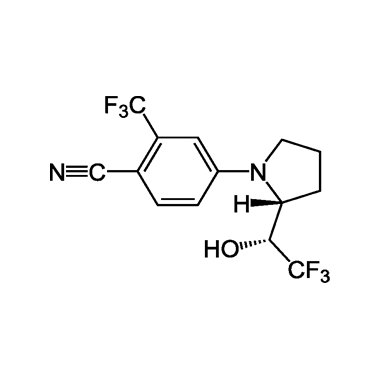Cardarine (GW501516)

Cardarine (GW501516, endurobol), CAS no 317318-70-0, has been of interest to scientists in association of improving LDL/HDL (’good’/’bad’ cholesterol) ratio. While the number of publications is not exactly minimal, there is insufficient evidence for cardarine to be used as an effective drug. Also there is a scientific debate associated with its pro-cancer and anti-cancer effects.
Cardarine (GW501516) and doping
In addition to scientific debate, there seems to be a rather polarized controversy surrounding cardarine among anti-doping organization and doping users that is less than stellar regarding to balanced presentation of information and use of evidence-based argumentation. For example, the controversy includes but is not limited to cardarine being assumed as an effective means of weight reduction while exactly the opposite can be suggested according to evidence. In addition, the effects of cardarine are dose dependent according to the evidence.
Cardarine (GW501516) in weight loss
More precisely, the researchers sought for weight reduction initially because of cardarine’s unique mechanism of action that is activating PPAR? receptor. Upon activation of PPAR?, the organism starts to prefer lipids for energy production – „lipid burning“ seems quite a suitable metaphor. Since PPAR? is normally activated by some of the free fatty acids, the effect of cardarine can be interpreted. As if making organism to sense a lipid overdose and causes organism to use that energy. Yet, there is no evidence that cardarine is a weight reducing agent. The animal studies evidence points to exactly the opposite, as high doses of cardarine seem to increase rather than decrease the weight. However, cardarine seems to reverse blood profile associated with metabolic syndrome [1,2,3]. That comprises obesity, poor physical performance and elevated blood pressure.
In addition to as if desirable effects to cardiac and striated muscles. Cardarine has been showed benefitting usually difficult-to-affect cartilage tissue as well [4]. Cardarine has a property of saving muscle mass after (over)training [5]. On the negative side, cardarine is probably harmful to bone tissue. As it caused lower bone mineral density in both higher and lower doses [6]. In addition to false myth that cardarine is an agent that helps to lower body mass by itself. There is a myth among doping users that cardarine can substitute for training. In truth, training increases the catabolism of proteins and gluconeogenesis while cardarine increases the ratio of lipid : glucose catabolism [7].
Cardarine in studies
The evidence has revealed different effects of cardarine at different doses in humans [8]. The small, 2.5 mg dose selectively increases the level of HDL (’good’ cholesterol), and also lowers levels of insulin, blood sugar and insulin. The high, 10 mg dose lowered the blood sugar but increased the level of blood free fatty acids, increased the HDL (and lowered the LDL in 15 mg dose) but did not change the level on insulin.
The controversy surrounding association of cardarine with cancer comprises of results associated with pro-cancer effects in one hand and anti-cancer effects in the other hand [9-14]. More precisely, the company that developed cardarine stopped the development when it discovered that huge doses of cardarine cause rapid development of cancer in test animals. On the other hand, another study found that cardarine actually inhibited the bladder cancer cells. Therefore, it should be considered unclear whether, or, more precisely, on which doses and circumstances cardarine is causing or counteracting cancer before any future studies are conducted. Unfortunately, since the interesting drug candidate has been abandoned and surrounded by controversies, the studies weighting long-term safety versus benefits seem somewhat unlikely.
References:
[1] https://www.ncbi.nlm.nih.gov/pubmed/24767130
[2] https://www.ncbi.nlm.nih.gov/pubmed/25063273
[3] https://www.ncbi.nlm.nih.gov/pubmed/27881385
[4] https://www.ncbi.nlm.nih.gov/pubmed/25331977
[5] https://www.ncbi.nlm.nih.gov/pubmed/19744959
[6] https://www.ncbi.nlm.nih.gov/pubmed/24708238
[7] http://onlinelibrary.wiley.com/doi/10.1002/cpt.673/full
[8] https://www.ncbi.nlm.nih.gov/pubmed/22814748
[9] http://onlinelibrary.wiley.com/doi/10.1002/cpt.632/full
[10] https://www.ncbi.nlm.nih.gov/pubmed/27638828
[11] https://www.ncbi.nlm.nih.gov/pubmed/23943160
[12] https://www.ncbi.nlm.nih.gov/pmc/articles/PMC3723355/
[13] https://www.ncbi.nlm.nih.gov/pubmed/21297860
[14] https://www.ncbi.nlm.nih.gov/pubmed/19660859
